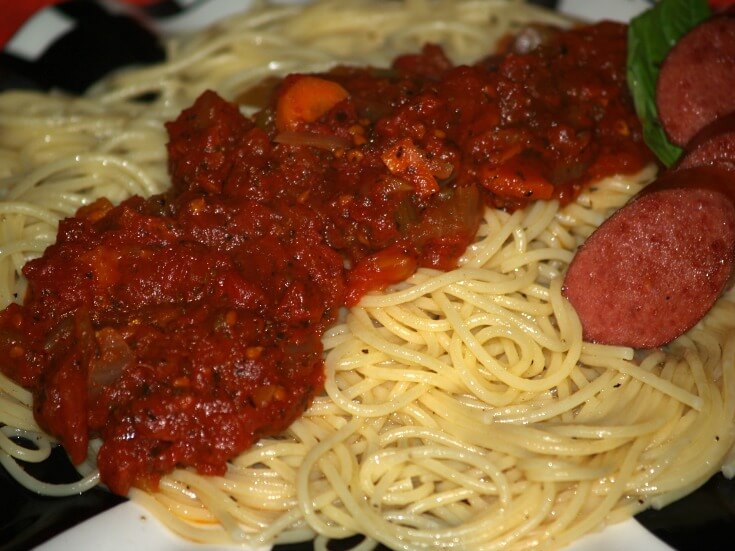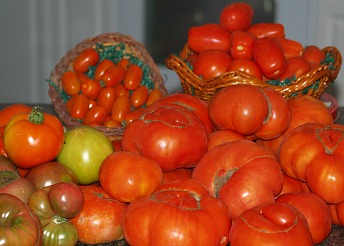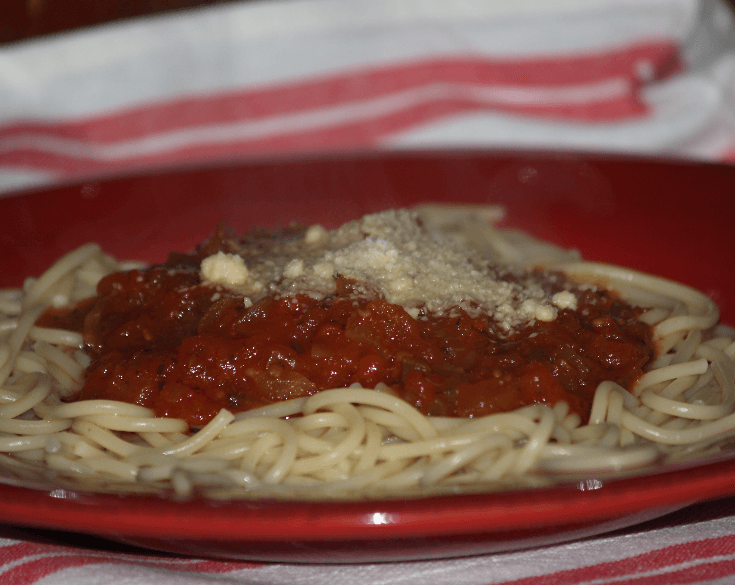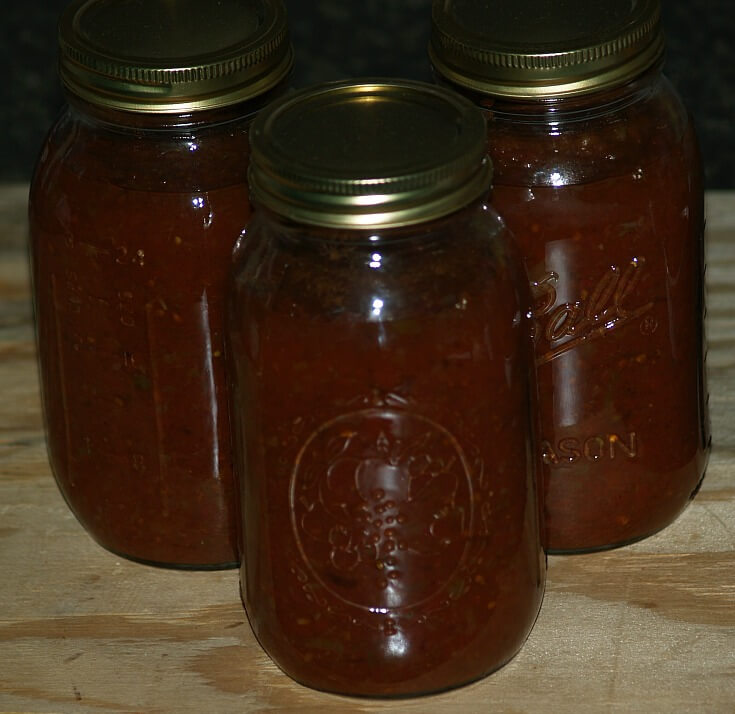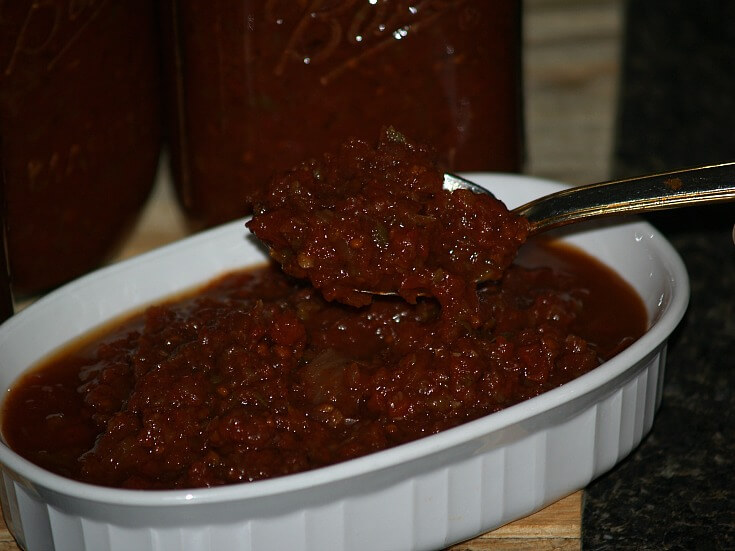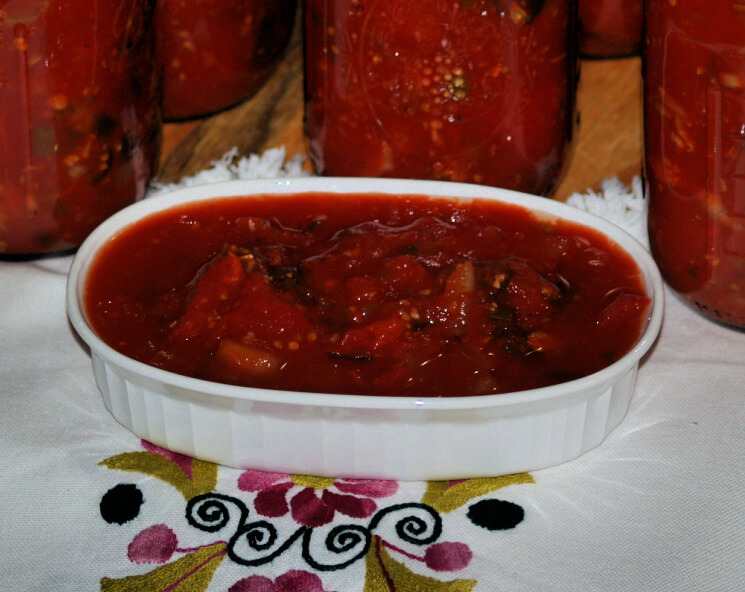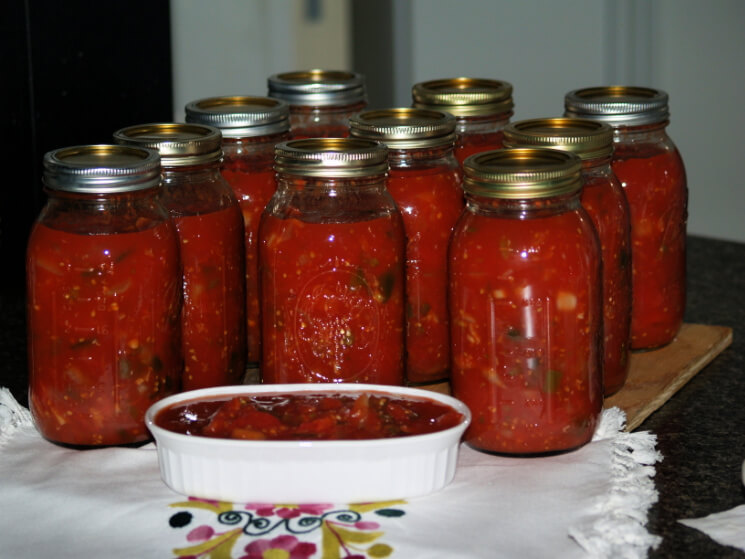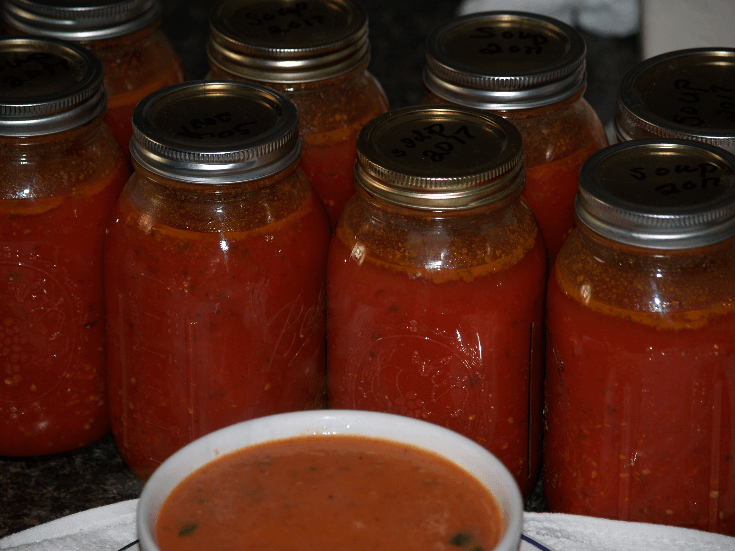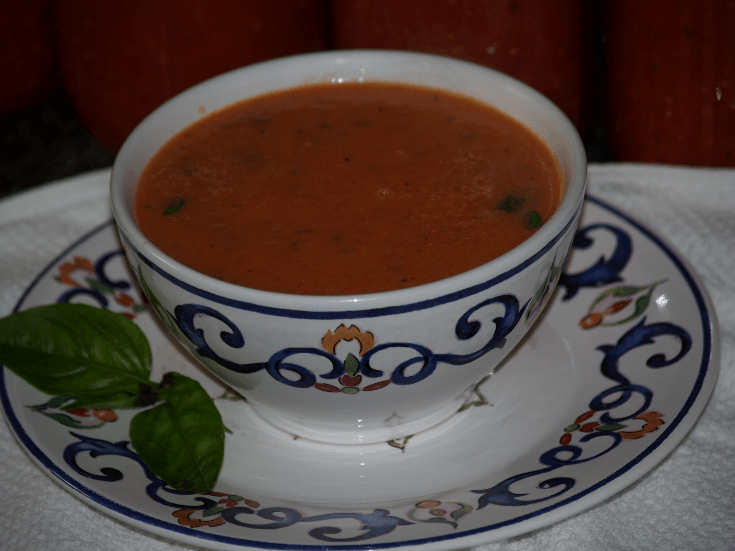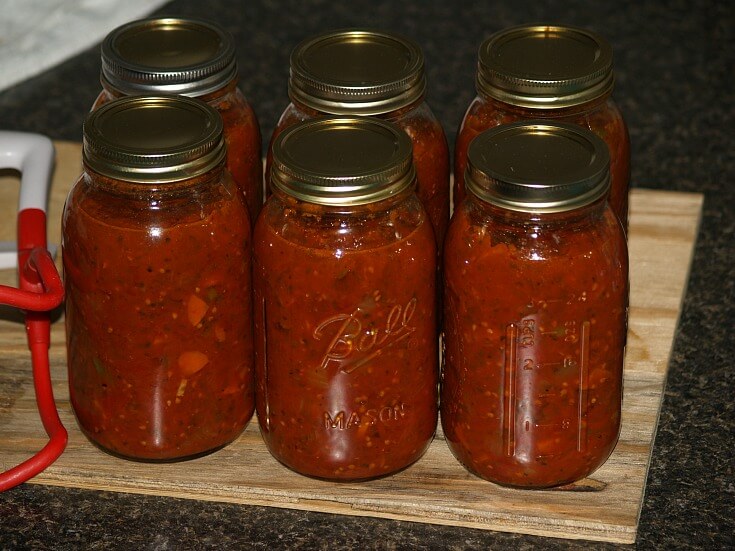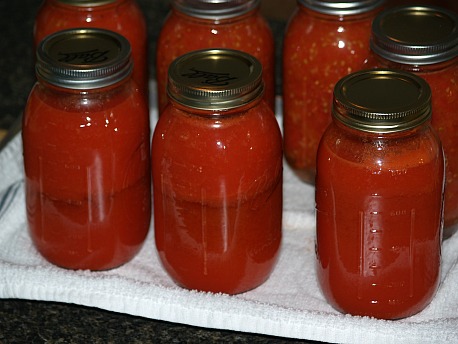Canning Tomatoes
When thinking about canning tomatoes you should know what kind of tomatoes are suitable for canning. The red ones are usually higher in acid which make good ones for canning. Even in the group of red ones, some are higher in acid than others. If you choose one of these red ones which is traditionally a tomato for canning, you should know if it is an heirloom or a newer version holding the same name. I have been told that a new version of an heirloom tomato is not as acidic; usually in this case a little lemon juice can be added. Another factor is the heirloom tomato has more juice that the newer versions. If you do not like as much juice in your tomatoes, you can drain off some of the juice after tightly packing the jars and before processing.
Today, there are so many names for tomatoes; some are even very regional. The best thing I have found is to see what is available for my area. Then I check each one to see what they are best suited for; eating or canning (and canning tomatoes, sauce, paste, ketchup, etc). I have also found a lot of help through county extension programs and talking to local growers. Almost any large bright red meaty tomato is suitable for canning. For recipes like sauce, ketchup and paste, the less juicy red tomatoes like the Roma are best simply because they cook down faster.
If you are canning tomatoes, there are also many products to be made with the tomatoes and canned for convenience, There are recipes for green tomatoes, red ripe tomatoes, yellow tomatoes and even many other colors.
Tomatoes are also broken down into categories such as juice, sauce or
paste depending on what you plan to make with them. Another very
important breakdown when canning tomatoes is whether they fall into the
acidic tomato or non acidic; this factor helps to decide what type of
processing needs to be done.
Over the past years there has been a big controversy about canning tomatoes; whether or not they contain enough acid to be raw packed. I always can the high acid tomatoes because these are the ones I like, therefore I raw pack them and then process in hot water bath; I have never had any problems. Some people cannot tolerate the high acid tomatoes in their system so choose to eat the low acid tomatoes; these should be boiled before packing and then processed. NOTE: USDA RECOMMENDS ALL TOMATOES BE HOT PACKED ONLY BECAUSE TOMATOES ARE BORDERLINE LOW ACID FOODS. This note includes all tomatoes, tomato sauce and tomato juice; tomato relishes with the added vinegar is ok for raw packing.
When canning tomatoes and making other products like sauces, you most likely will be adding other ingredients. Some of these ingredients are low acid and when enough of these ingredients are added it may bring the acid content down to dangerously low. When you are canning mixed ingredients such as in sauces, soups, etc., process the mixture for the length of time required for the ingredient requiring the longest time. If one ingredient in your recipe requires pressure canning then the mixture will require pressure canning to be safe.
When canning tomatoes if you add NO MORE THAN 3 CUPS combined other ingredients TO 18 POUNDS OF TOMATOES and contains NO MEATS it can be processed in a boiling water bath; examples: stewed tomatoes, tomato puree, meatless tomato sauce. Tomato recipes such as any tomato celery combinations, tomato pepper sauces, vegetables soups, tomato bean combinations, tomato zucchini combinations, all chili with or without meat, beans or tomatoes MUST BE CANNED IN A PRESSURE COOKER. Anytime you are in question, it is always best to pressure can. Check it out before canning; USDA is a good place to look for more answers.
As you prepare tomatoes for canning, check them thoroughly for any blemishes. Cut away all spots and blemishes; one spot will ruin the whole jar of tomatoes. Drop the tomatoes in boiling water a few seconds; then place them in cold water. This process will make them easy to peel. After peeling check again for blemishes before putting the tomatoes in the jars. Sometimes I cut one in half to check the inside color; occasionally you might find a dark color in the center; these need to be discarded. Quite often I will smell a tomato where I have cut away a bad spot. If it has a foul order, I pitch it out. (The wild animals around here love all these tomato trimmings).
CANNING TOMATOES TIPS
If you have too many tomatoes and not enough time to can them, pack whole tomatoes in plastic freezer bags and place in the freezer. When you are ready to use them, remove the bag from the freezer. By holding the tomatoes under warm running water the peel will slip right off. You can now chop them into soup, chili or stew.
When cutting fresh tomatoes for canning, place the cutting board inside a pan or on a tray. The tray will catch all the juice making cleanup easier.
CHUNKY SPAGHETTI SAUCE RECIPE
- ¼ Bushel plum tomatoes
- 3 Cans (6 ounces each) tomato paste
- 1 Finely chopped green bell pepper
- 1 ½ Medium onions (Finely chopped)
- ¼ Cup sugar
- 1 ½ Teaspoons garlic powder
- 1 Tablespoon salt
- ¼ Teaspoon black pepper
- 1/8 Teaspoon red pepper
- 1 Tablespoon oregano
- 1 ½ Tablespoons basil
- 3 Bay leaves
Blanch tomatoes, peel and remove stems and any blemishes.
Dice tomatoes and place in large stainless steel stockpot.
Add remaining ingredients; bring to a boil over medium heat stirring to blend well.
Reduce heat; cover and simmer about 1 ½ hours.
Pour sauce in hot sterilized quart jars; adjust lids.
Process in hot water bath for 30 minutes.
CHILI SAUCE RECIPE
- 36 tomatoes
- 6 Onions
- 4 Green bell peppers
- 2 Cups sugar
- 2 ½ Cups vinegar
- 4 Tablespoons salt
- 2 Tablespoons allspice
- 2 Tablespoons cinnamon
- 2 Teaspoons celery seed
- 2 Teaspoons nutmeg
- 2 Teaspoons cloves
Coarsely grind all vegetables; cook slowly until thick (about 2 ½ to 3 hours) stirring often.
Put in hot sterilized jars and seal immediately.
Process in hot water bath 15 minutes.
Tomato Jalapeno Salsa
- 24 Pounds tomatoes
- 4 Cups chopped jalapenos (with seeds) *NOTE
- 4 Large chopped onions
- 30 Gloves (3 bulbs) minced garlic
- 1/2 Cup chopped fresh cilantro
- 1/2 Cup salt
- 1 Tablespoon Cayenne pepper
- 4 Teaspoons sugar
- 2 Cans (12 ounces) tomato paste
- 4 Cups apple cider vinegar
* NOTE: Jalapenos can vary greatly in "heat". Adjust the heat by leaving out some or all of the seeds.
Blanch, peel and chop tomatoes.
Put in a colander and let drain while preparing.
Dump tomatoes into a large pan. (I used a large roasting pan.)
Add the remaining ingredients and stir to mix.
Bring mixture to a boil; turn down to medium heat.
Cook about 10 minutes, stir and make sure mixture is thoroughly hot.
Fill hot sterilized quart jars and adjust the lids to the jars.
Hot water bath for 10 minutes. (Makes about 12 quarts)
CANNED TOMATO SOUP RECIPE
- 8 Quarts tomatoes cut in chunks
- 3 Large finely chopped onions
- 6 Finely chopped carrots
- 6 Stalks finely chopped celery
- 2 Tablespoons fresh chopped parsley
- ½ Cup butter
- ¼ Cup salt
- ½ Cup brown sugar
- 1 Teaspoon grated nutmeg
- ¼ Teaspoon cayenne pepper
- ¼ Cup flour
Cook vegetables until all are tender; put through strainer.
Place mixture back in pan and add butter, salt, sugar, nutmeg and cayenne.
Combine flour with cold water to make smooth paste; blend into tomato mixture.
Cook thoroughly while stirring constantly; put hot mixture into hot sterilized quart jars and cap.
Process in boiling water bath for 30 minutes.
TOMATO SOUP RECIPE
- 1 Peck chopped tomatoes
- 12 Large chopped onions
- 2 Bunches chopped celery
- 2 Bay leaves
- 12 Whole cloves
- 1 Cup sugar
- ½ Cup salt
- 1 Cup flour
Cook tomatoes, onions, celery, bay leaves and cloves until vegetables are tender.
Run mixture through a sieve and put back into pan.
Mix sugar, salt and flour with enough cold water to make a smooth paste.
Blend flour mixture into tomato juice mixture; stir and cook about 15 minutes.
Scoop hot mixture into hot sterilized quart jars and process in boiling water bath 30 minutes.
To make this creamed tomato basil soup use one quart of the canned tomato soup stir in a little cream and fresh chopped basil; heat until hot.
TOMATO PASTE RECIPE
- 16 Pounds tomatoes
- ¾ Cup apple cider vinegar
Wash, peel and chop tomatoes in a stainless steel or enamel kettle.
Bring to a boil and slowly simmer for 1 hour uncovered.
Run tomatoes through a food mill; return juice and pulp back to heat and bring to a boil.
Boil mixture stirring occasionally until thick and mixture stays on spoon; about 6 hours.
Stir in vinegar and blend well; spoon hot mixture into hot sterilized pint jars leaving ½ inch headspace and cap.
Process in boiling water bath for 30 minutes.
CANNING TOMATO SAUCE RECIPE
This is one of the main recipe I use when canning tomatoes.
- 4 Quarts plum tomatoes, peeled and chopped
- 2 Tablespoons olive oil
- 2 Cups chopped onions
- 2 Cloves minced garlic
- 2 Cups chopped carrots
- 1 Chopped green pepper
- 1 Cup chopped celery
- 4 Tablespoons finely chopped parsley
- 2 Teaspoons oregano
- ½ Cup lemon juice
- Salt/pepper
In a large heavy stainless steel pan sauté onions and garlic in olive oil.
Stir in green peppers, carrots, celery and tomatoes; add parsley, oregano, salt and pepper.
Simmer uncovered about 2 hours until thick; stir occasionally.
Pour in lemon juice and blend well; pour into hot sterilized pint jars and cap.
Process in boiling water bath for 35 minutes.
CANNING TOMATO JUICE RECIPE when canning tomatoes always can a few tomato juice jars
Wash and drain firm red ripe tomatoes removing all blemishes and bad spots.
Cut in small pieces and cook slowly until very soft stirring often.
Press through a fine sieve adding salt and pepper to taste; reheat juice until very hot but not boiling.
Pour into hot sterilized pint jars leaving ¼ inch head space; cap to seal.
Process 10 minutes in boiling water bath.
SPICED RED TOMATOES
When learning new recipes for canning tomatoes, try this one flavored with allspice and cloves.
- 8 Pounds ripe tomatoes
- 1 Pint vinegar
- 4 Pounds sugar
- 2 Tablespoons ground allspice
- 1 Tablespoon ground cloves
Weigh tomatoes after peeling; crush.
Combine all ingredients in a heavy pot and bring to a boil.
Simmer tomato mixture until thickened.
Seal in hot clean sterilized jars while hot. (Will thicken more after cooling)
RIPE TOMATO CATSUP
For most, canning tomatoes usually include many different ketchup recipes.
- 42 Large sauce tomatoes
- 2 Large tomatoes
- 1 Pint vinegar
- 2 Large green bell pepper
- 2 ½ Cups light brown sugar
- 1 Tablespoon salt
- ½ Teaspoon red hot pepper
- ¾ Box pickling spice
Combine all ingredients in a large heavy pot; bring to a boil.
Boil until thickened about 1 ½ hours; seal tightly in clean hot sterilized jars.
